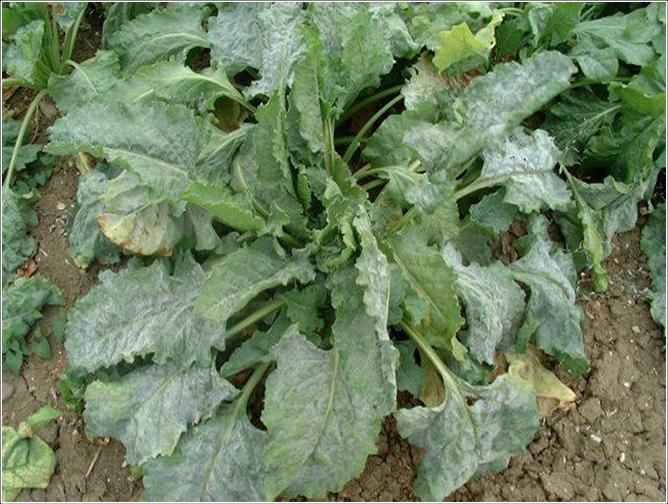
Powdery mildew is by far the most yield damaging disease in sugar beet, causing up to 20% yield loss. It adversely affects yield by draining the plant of nutrients, reducing root growth, increasing plant respiration, reducing green leaf area and blocking photosynthetic pathways. It will reduce yield and suppress sugar content, particularly on later-drilled crops. This is particularly so on susceptible varieties, which now represent at least half of the crop in the ground this year, warns Dow AgroSciences.
"More that 80% of sugar beet crops receive a mildew treatment and that is where the focus should be, particularly this year. Brooms Barn are already warning growers that it will be a high mildew year, with 40% of the crop predicted to become infected by the end of August. All the more reason to choose an effective and persistent mildewicide as the cornerstone product in your disease control programme," says Liz Tomkinson, Fungicide Specialist for Dow AgroSciences.
Incorporating the strong, persistent mildew-specific fungicide Fortress into any sugar beet programme will ensure effective control of this damaging foliar disease and help optimize the resulting crops' yield potential, she says.
Liz explains that Fortress has provided top levels of mildew control in sugar beet control over many years of commercial usage. "Based on quinoxyfen, Fortress binds rapidly to the plant and then moves in and around the plant to protect all new growth. Protection can last more than 8 weeks. Last year's Brooms Barn trials shows that Fortress was one of the highest performing individual products on mildew."
"The extent of the powdery mildew epidemic each year depends upon the number of ground frosts in February and March. The disease overwinters on groundkeeper crowns, wild beet or beet volunteers and so the lower the number of frosts, the greater the amount of inoculum is available to infect newly drilled crops."
"If the weather is warm and dry in July and August, then powdery mildew is likely to arrive earlier, starting in East Anglia. Growers should be out looking for disease and be prepared to apply Fortress at the first signs of disease. If rusts or Ramularia also become a problem, normally later in the season and usually much more sporadically, a tank-mix of 0.1 l/ha Fortress with 0.125 l/ha cyproconazole at lower rates of use has provided excellent results. This mix will cost around £12/ha, a lot less than some co-formulated products. It is a flexible option and resulted in the highest yields in the 2006 Brooms Barn trials, as well as in the previous four years independent trials work," reports Liz.
"With growers looking to maximise yields and profits, a comprehensive two-spray fungicide has become the norm, particularly on high output varieties with low mildew and rust resistant ratings. With the EU sugar scheme taking effect, growers need to make the most from their sugar beet hectarage and get more of their quota out of a smaller area of land. Appropriate fungicide usage will make an important contribution to yields and gross margins," concludes Liz.
Fortress contains 500 g/litre quinoxyfen, formulated as a suspension concentrate. It is a systemic protectant fungicide giving protection against powdery mildew on new plant growth. It is recommended on all varieties of sugar beet, wheat, barley, rye, triticale, durum wheat and winter and spring oats. In sugar beet Fortress should be applied at 0.15 - 0.3 l/ha in 200-400 litres of water at first signs of disease, usually in July up until any time up to 28 days before harvest. It is rainfast in one hour and is packed in a 1 litre container.
